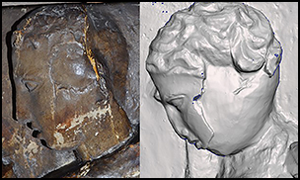Crossref Citations
This article has been cited by the following publications. This list is generated based on data provided by Crossref.
Campbell, Louisa
2021.
Flipping the Script on Colonial Narratives: Replicating Roman Reliefs from the Antonine Wall.
Public Archaeology,
Vol. 20,
Issue. 1-4,
p.
3.
Rangel-de Lázaro, Gizéh
Martínez-Fernández, Adrián
Rangel-Rivero, Armando
and
Benito-Calvo, Alfonso
2021.
Shedding light on pre-Columbian crania collections through state-of-the-art 3D scanning techniques.
Virtual Archaeology Review,
Vol. 12,
Issue. 24,
p.
1.
Risdonne, Valentina
Francescutto Miró, Adriana
Morio, Sayuri
and
Theodorakopoulos, Charis
2022.
The Victoria and Albert Museum Plaster Casts by the Nineteenth-Century Workshops of the Notre-Dame Cathedral: Scientific Analysis and Conservation.
Heritage,
Vol. 5,
Issue. 4,
p.
3427.
Leitzel, Jim
2022.
Athens or London? The Parthenon Marbles and economic efficiency.
Social Sciences & Humanities Open,
Vol. 6,
Issue. 1,
p.
100325.
Leitzel, Jim
2022.
The Parthenon Marbles in the British Museum.
SSRN Electronic Journal ,
Lohfink, Marc-Alexander
Miznazi, Diana
Stroth, Fabian
and
Muller, Christoph
2022.
Learn Spatial! Introducing the MARBLE-App - A Mixed Reality Approach to Enhance Archaeological Higher Education.
p.
435.
Risdonne, Valentina
Hubbard, Charlotte
López Borges, Victor Hugo
and
Theodorakopoulos, Charis
2022.
Materials and Techniques for the Coating of Nineteenth-century Plaster Casts: A Review of Historical Sources.
Studies in Conservation,
Vol. 67,
Issue. 4,
p.
186.
St Clair, William
St Clair, David
and
Barnes, Lucy
2022.
Who Saved the Parthenon?.
Hermon, Sorin
Orabi, Rahaf
Vassallo, Valentina
Polig, Martina
MacGillivray, Joseph Alexander
and
Driessen, Jan
2024.
The death and the (digital) re-birth of a god – 3D virtual refitting of the Palaikastro Kouros.
Journal of Cultural Heritage,
Vol. 68,
Issue. ,
p.
99.
Yang, Brian
2025.
Thinking about colonial institutions through a framework of hoarding.
Museum Anthropology,
Vol. 48,
Issue. 1,


